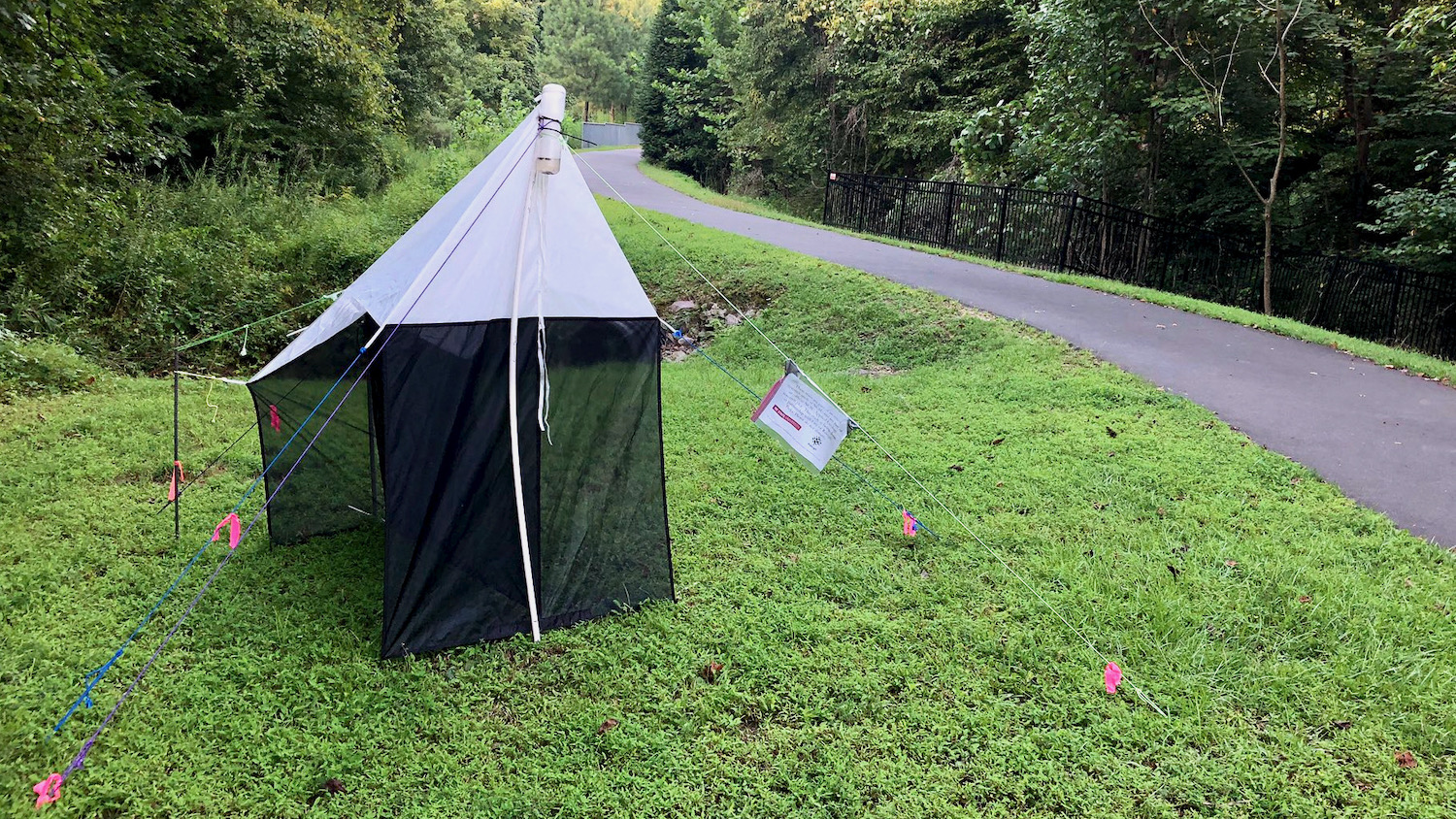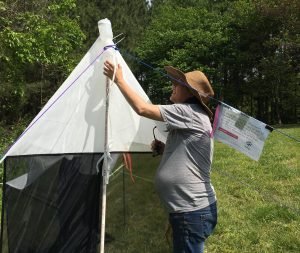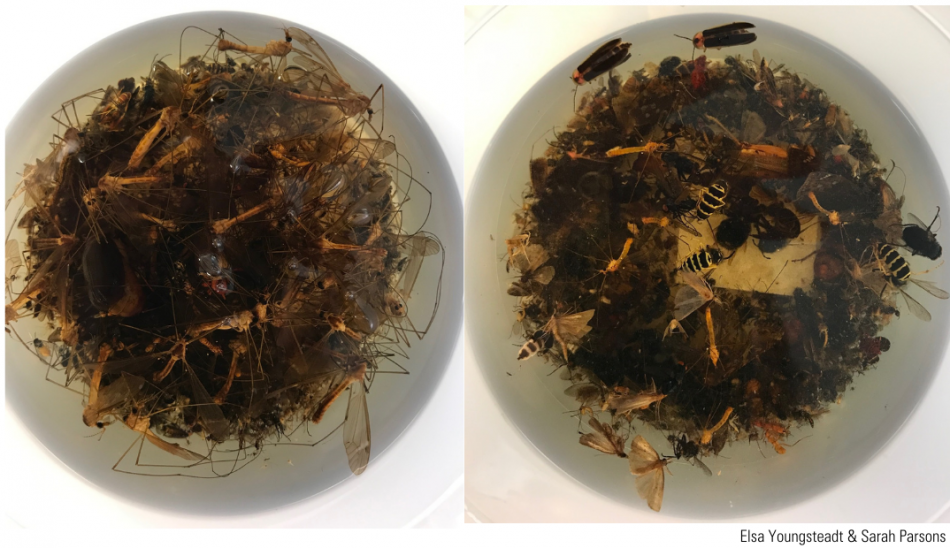
Photo provided by Alonso Ramírez @ARamirezLab
The white tents tagged with Applied Ecology research along the greenway are traps being used by Sarah Parsons and Applied Ecology’s Elsa Youngsteadt. The research will identify which urban habitats contribute the most to insect conservation and test whether basic ecology principles can still be applied within urban areas, or if they’ll need to re-write the rules.

Parsons and Youngsteadt are urban ecologists and are using these traps and other, less obvious ones, to measure how insect biomass (the total weight of the life, or “bio,” present) changes across different urban spaces.
But before you can weigh it, you have to collect it. Parsons and Youngsteadt are using a mix of malaise traps (the tents) for flying insects and pitfall traps (self-explanatory) for the creepy crawlers. Together, these traps will begin to paint a picture of how insects populate different urban areas and identify biomass hotspots that may help conserve birds and other wildlife that depend on insects for food.
“Globally, we’re seeing declines in insect biomass. Even some very common species are less abundant than they once were,” says Youngsteadt. “Ecologists are still trying to understand which kinds of insects are declining and why, and we’re interested in the urban piece of that puzzle.”
Urban spaces are fascinating ecosystems. While they often lack the lush greenery of forests that normally indicate high insect biomass, they uniquely have external inputs that can increase the amount of bugs – like the abundance of food waste in our trash.
“One ecological principle tells us that where there are more trees there are more bugs,” says Parsons. “But we don’t know if that’s true in urban areas because of these external inputs.”

Keep a look out for this research-in-action next year! While they have wrapped up data collection for 2021, Sarah and Elsa plan to re-deploy the traps again in the summer of 2022.
Sarah received her Ph.D. from NC State in 2019 and is a Global Change Fellow alum. She now collaborates with Elsa as a lecturing fellow at Duke University.